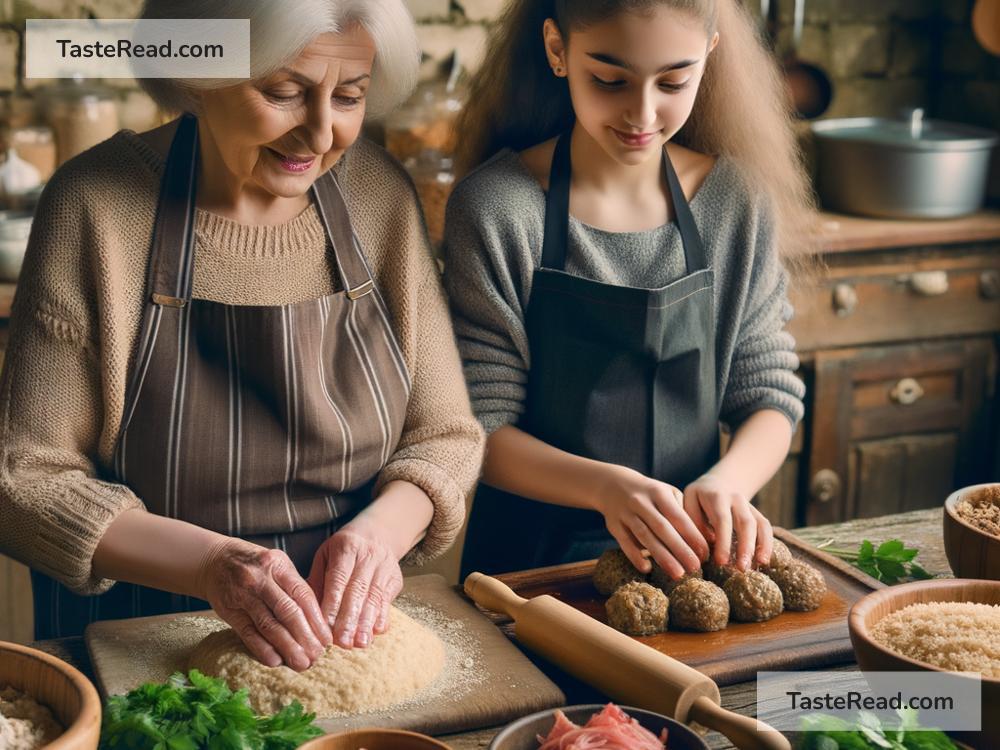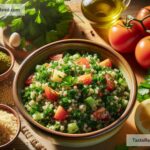Lebanese Kibbeh Recipes Shared Across Generations
Kibbeh is one of the most loved dishes in Lebanese cuisine, known for its rich flavors and cultural significance. This traditional dish has been passed down through generations, bringing families together and connecting them to their heritage. Whether served at celebrations, casual dinners, or family gatherings, kibbeh holds a special place in Lebanese hearts. Let’s explore the fascinating history, variety, and importance of kibbeh recipes shared across generations.
What is Kibbeh?
Kibbeh is a versatile Lebanese dish made primarily from bulgur wheat, ground meat (usually lamb or beef), onions, and a mix of spices. It’s known for its unique texture, which is soft yet sturdy. Kibbeh can be made in multiple ways—baked, fried, served raw, or shaped into different forms.
While kibbeh has variations throughout the Middle East, it’s considered the national dish of Lebanon. Wherever you’re from, when you taste kibbeh, you can feel the warmth of home-cooked meals and the richness of tradition woven into every bite.
The Role of Kibbeh in Lebanese Tradition
In Lebanon, food is more than just sustenance—it’s an expression of love, connection, and identity. Kibbeh is a prime example of this cultural mindset. Making kibbeh is often a family event, where grandmothers, mothers, and daughters gather in the kitchen to prepare it together.
Each family has its own unique recipe, passed down from one generation to the next. Some prefer the kibbeh to be spicy, while others may add nuts or dried fruits depending on their region and taste. Sharing these recipes allows families to honor their history and preserve their culinary traditions.
Different Styles of Kibbeh
Kibbeh is special because it can be prepared in a variety of ways, making it adaptable to different tastes and occasions. Here are some popular styles of kibbeh:
-
Kibbeh Nayeh (Raw Kibbeh)
Kibbeh nayeh is the raw version of kibbeh, made with fresh ground meat and bulgur wheat mixed with spices like cinnamon, allspice, and nutmeg. It’s served cold and often paired with olive oil, fresh mint leaves, and pita bread. Kibbeh nayeh is a dish that requires high-quality ingredients and skill to bring out the perfect flavor. Many Lebanese families enjoy it as a delicacy, often during special meals. -
Kibbeh Bil Sanieh (Baked Kibbeh)
This baked version of kibbeh is made by layering a mix of ground meat, bulgur, and spices into a baking dish. Often, a layer of sautéed meat with onions is spread in between the top and bottom layers. Once baked until golden and crispy, it’s cut into diamond shapes and served warm. Kibbeh bil sanieh is comforting and perfect for feeding larger groups. -
Fried Kibbeh (Kibbeh Balls)
Fried kibbeh is one of the most popular versions, especially at gatherings and celebrations. The mixture of bulgur and meat is shaped into oval balls, stuffed with spiced ground meat, onions, and pine nuts, then fried to perfection. The crunchy exterior and juicy filling make it an irresistible treat. -
Vegetarian Kibbeh
While traditional kibbeh uses meat, there are vegetarian and vegan versions as well. These recipes replace meat with ingredients like spinach, eggplant, lentils, or pumpkin while keeping the bulgur and spices. Vegetarian kibbeh is just as flavorful and reflects the innovative ways Lebanese families adapt their recipes.
Learning Kibbeh Through Generations
The process of making kibbeh is just as important as the dish itself. In many Lebanese households, kibbeh-making day is an event. Elder family members guide the younger ones, teaching them techniques and sharing stories about their childhood or their region’s culinary traditions.
Grandmothers often remind their grandchildren about the importance of patience when kneading the bulgur and meat mixture. Mothers share tricks such as soaking the bulgur for the right amount of time or balancing the spices to achieve the perfect blend. These moments in the kitchen are more than cooking lessons—they’re valuable exchanges of love and culture.
The art of making kibbeh also teaches young family members to appreciate the effort and care that goes into traditional cooking. It helps them stay connected to their roots, even as modern life changes how we eat and live.
Kibbeh’s Universal Appeal
Although kibbeh has deep Lebanese roots, it has won the hearts of people from around the world. Lebanese emigrants have taken their kibbeh recipes with them, sharing this special dish with others in their new communities. Today, kibbeh is enjoyed in restaurants globally, introducing people to the flavors and stories of Lebanon.
For those trying kibbeh for the first time, it’s more than just a meal. It’s a chance to experience Lebanese culture and tradition, passed down through the generations.
Conclusion
Lebanese kibbeh is more than food—it’s a link to the past and a celebration of family and community. Whether it’s kibbeh nayeh carefully prepared for a special dinner, fried kibbeh served at festive gatherings, or baked kibbeh enjoyed with loved ones, each version comes with its own story and meaning.
By sharing recipes and preserving traditions, the Lebanese ensure that kibbeh continues to be a symbol of love and connection for generations to come. No matter how life changes, kibbeh will always carry the flavors of home and the warmth of family. So next time you enjoy kibbeh, you’ll know you’re tasting more than just a dish—you’re savoring a piece of history and culture.


